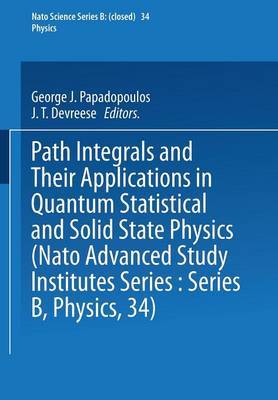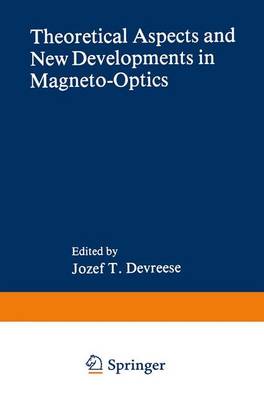NATO Science Series B
2 primary works
Book 34
The Advanced Study Institute on "Path Integrals and Their Applications in Quantum, Statistical, and Solid State Physics" was held at the University of Antwerpen (R.U.C.A.), July 17-30, 1977. The Institute was sponsored by NATO. Co-sponsors were: A.C.E.C. (Belgium), Agfa-Gevaert (Belgium), l'Air Li~uide BeIge (Belgium), Be1gonucleaire (Belgium), Bell Telephone Mfg. Co. (Belgium), Boelwerf (Belgium), Generale BankmaatschappiJ (Belgium), I.B.M. (Belgium), Kredietbank (Belgium), National Science Foundation (U.S.A.), Siemens (Belgium). A total of 100 lecturers and partici- pants attended the Institute. The development of path (or functional) integrals in relation to problems of stochastic nature dates back to the early 20's. At that time, Wiener succeeded in obtaining the fundamental solution of the diffusion e~uation using Einstein's joint probability of finding a Brownian particle in a succession of space intervals during a corresponding succession of time intervals. Dirac in the early 30's sowed the seeds of the path integral formulation of ~uantum mecha- nics.
However, the major and decisive step in this direction was taken with Feynman's works in ~uantum and statistical physics, and quantum electrodynamicso The applications now extend to areas such as continuous mechanics, and recently functional integration methods have been employed by Edwards for the study of polymerized matter.
However, the major and decisive step in this direction was taken with Feynman's works in ~uantum and statistical physics, and quantum electrodynamicso The applications now extend to areas such as continuous mechanics, and recently functional integration methods have been employed by Edwards for the study of polymerized matter.
Book 60
The Advanced Study Institute on "Theoretical Aspects and New Developments in Magneto-Optics" was held at the University of Antwerpen (R.U.C.A.), from July 16 to July 28, 1979. The Institute was sponsored by NATO. Co-sponsors were: Agfa-Gevaert (Belgium), A.S.L.K. (Belgium), Bell Telephone Mfg. CO. (Belgium), Esso Belgium, Generale Bankmaatschappij (Belgium), General Motors (Belgium), I.B.M. (Belgium), Kredietbank (Belgium), Metallurgie Hoboken-Over pelt (Belgium), National Science Foundation (U.S.A). A total of 60 lecturers and participants attended the Institute. Scope of the Institute The magneto-optic phenomena are due to the change of the polarizability of a substance as a result of the splitting of the quantized energy bands. Most of these phenomena were discovered during the second half of this century. The understanding of the magneto-optical effects of all kinds, however, was brought by the advent of quantum mechanics, and since then important progress has been made in many fields of experimental methods and techniques.

